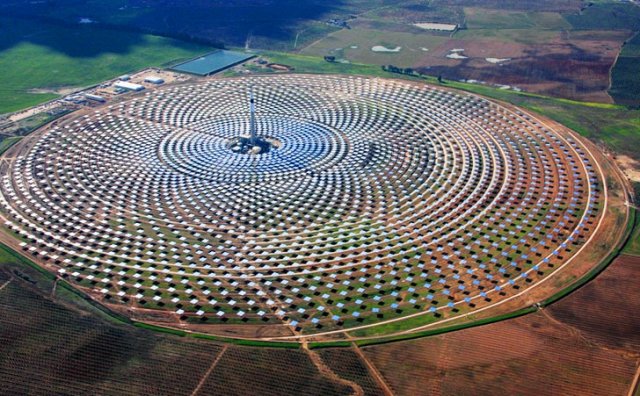
On March 23 Prime Minister Malcolm Turnbull announced a new Clean Energy Innovation Fund (CEIF) with $1 billion in funding over ten years. The Prime Minister's media release explicitly mentioned that it could be used to fund projects such as a “large scale solar facility with storage in Port Augusta”.
Given the years of ground work by the community and groups like Australian Youth Climate Coalition for a baseload solar power station in Port Augusta this definitely sounded like a win for the climate movement. With the existing coal-fired power stations due to close in two months, the time is now for the federal government to commit funding to ensure such a plant becomes a reality.
But after a little digging the announcement looked more like the government is taking the climate movement for a ride.
Unfortunately, the social media memes that this was “huge news” and a “massive step forward” amounted to free publicity for Turnbull's sleight of hand in removing $1.3 billion in funding from renewable energy. This $1.3 billion is currently uncommitted funds for the Australian Renewable Energy Agency (ARENA), which will now be shelved.
The establishment of the new fund was really an act to de-fund ARENA. As Giles Parkinson reported in Renew Economy: “ARENA's grant-based funding strategy will be replaced by 'innovative' finance such as debt and equity funding — effectively lending money and buying shares in the investments”.
ARENA will continue to exist as a shell to manage existing projects funded by the grant scheme, but it will not be able to allocate new grant funding. Meanwhile the CEIF will only receive re-allocated funds from the Clean Energy Finance Corporation (CEFC).
Certainly the renewed commitment to the CEFC was an announcement welcomed by many in the renewable energy industry, as bills have been pending in parliament to scrap the CEFC and ARENA. The CEFC has played an important role in providing low interest finance to renewable energy projects that would otherwise be overlooked by traditional banks.
The Clean Energy Council said: “We are pleased that the CEFC is going to live on, but we are disappointed that the government will press on and reduce the budget for ARENA and its ability to provide capital grants”.
The Australian Solar Council said in a statement: “ARENA has $1.3 billion in allocated and unspent funds between 2016–2022. The government has announced it will replace this with $1 billion in funds between 2016 and 2026, taken from the Clean Energy Finance Corporation's existing $10 billion budget.”
ARENA has played a vital role in supporting renewable energy by providing grant funding to support new and innovative projects and technologies in the early deployment phase. It was formed with $2.5 billion in funding until 2022 and has already funded a number of important projects including solar thermal research, grid integration of battery storage, and the Carnegie Wave Energy technology in WA.
It also has an active competitive funding program in large-scale solar photovoltaics for projects that can demonstrate an effective cost of power — Levelised Cost of Energy — below $13.5 c/kWh. This is a $100 million funding allocation and so far 22 high merit projects, with a total capacity of 766 megawatts, have been selected to proceed to the full application stage. Despite the claims that only CEIF could fund large scale solar with storage in Port Augusta, there is no practical barrier to ARENA playing this role.
This grant funding role is important because renewable energy does not compete on a level playing field, with our energy system designed for large centralised fossil fuel generators that were built using public money. In addition grants help to establish industries that are considered strategically useful for society and the economy and build a new skill and employment base.
Unfortunately grant funding will no longer be available under the CEIF, and its role will be to provide finance at a lower interest rate than the current CEFC. The CEFC requires a “rate of return” of 4% above the government bond rate (3%) providing an effective interest rate of 7%. The new CEIF will provide a lower threshold of 1% return for projects, providing an effective interest rate of 4%.
Miriam Lyons and Nicky Ison from Getup argued: “The CEIF ... will support projects expected to make less cash in their early years, which will help the crucial and innovative projects we desperately need to get off the ground.”
Lyons and Ison called for the CEFC to adopt the same lowered rate of return for all their finance arguing: “A difference of 3% might not sound like much, but it's the difference between the CEFC being able to do its job properly, and being forced to act much like any other commercial bank”.
All this illustrates that Malcom Turnbull and the Liberal Government have done very little to advance the cause for renewable energy in Australia. Given the recent discovery that February's average temperature was a full 1.5 degrees above the pre-industrial average, it is hoped that Turnbull will deliver serious action on climate change.
Unfortunately a $1.3 billion cut in funding to renewables does not look like serious action on climate change.
Like the article? Subscribe to Green Left now! You can also like us on Facebook and follow us on Twitter.